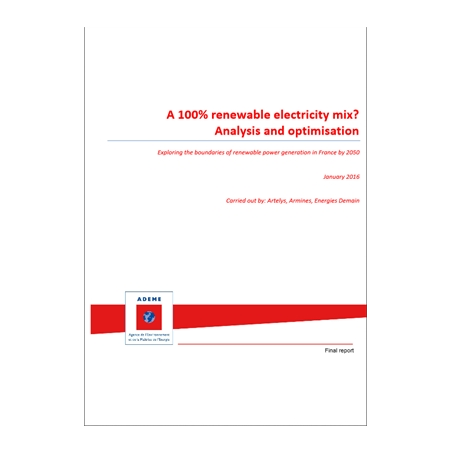In 2013, ADEME published its energy and climate scenarios for the period 2030 to 2050, suggesting possible avenues to achieve a four-fold reduction in greenhouse-gas emissions by 2050 by cutting energy consumption by half and deploying renewable energy sources for electricity generation on a substantial scale. Both of these objectives were the basis for targets set by the Président of France and subsequently adopted by Parliament in the Energy Transition Law to promote green growth.
With this new study, ADEME submits an exploratory scientific prospective study. Questions of balance between production and demand and cost efficiency of renewable-based electricity mixes are investigated through an advanced optimisation. The electricity mixes are theoretical: they are created from scratch and do not take into account the current situation or the path needed to achieve a 100% renewable-based electricity system. It aims at highlighting the technical measures to be implemented (strengthening grids, load shedding and storage) to support a policy of growth in renewable electricity technologies. It is also be used to identify the key factors for developing renewable technologies at lower cost such as lower costs of technologies, demand-side management, development of flexibility, support of R&D of least-mature technologies and the social acceptance of renewable electricity installations.
An internet animation with breakdown in hourly intervals of 100% renewable electricity mix is available at:
http://mixenr.ademe.fr/en
